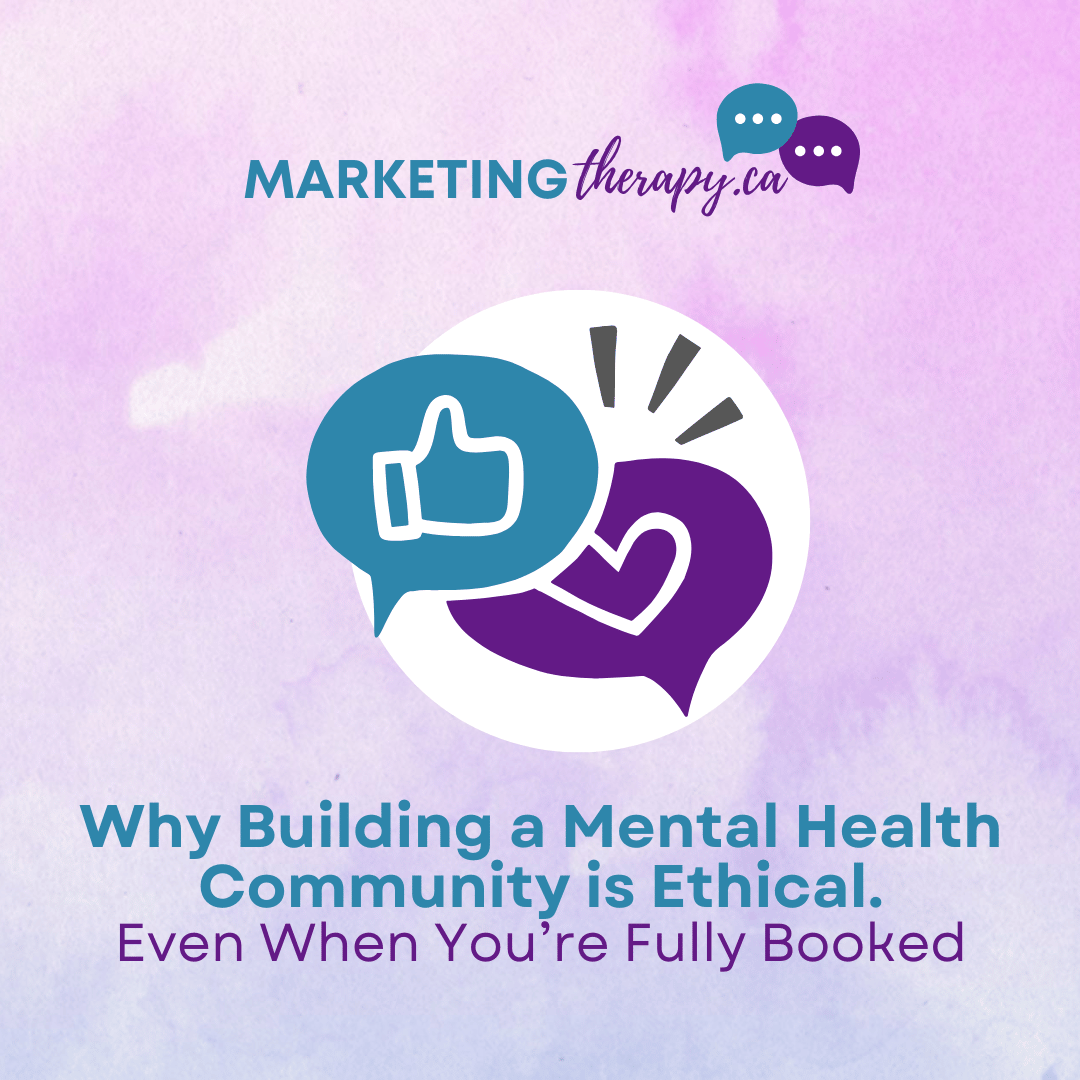Why Building a Mental Health Community Is Ethical. Even When You're Fully Booked
If you’re a therapist or mental health organization with a full client load, it might feel like there’s no point in showing up online. You might wonder, “Why post content or build a community if I can’t take on more clients?”
Here’s the truth: Creating a supportive, online mental health community isn’t just ethical it provides community care. It helps reduce stigma, increase accessibility, and offer a soft entry point for people who aren’t ready (or able) to enter therapy yet.
Let’s explore how.
1. Community Content Helps Reduce Mental Health Stigma
Every time you post a validating quote, a short tip, or even a carousel breaking down therapy myths, you’re doing more than marketing. You’re actively de-stigmatizing mental health.
People scrolling might see your post and think:
“Oh wow, that’s me. I didn’t know others felt this way.”
“So it’s not laziness it’s burnout?”
“I didn’t realize therapy could look like that.”
You’re planting seeds. Even if someone doesn’t become your client, they may begin their mental health journey because you showed up online.
2. It Increases Accessibility for Those Who Can’t Access Therapy
Not everyone can attend therapy right now. Barriers include:
Long waitlists (maybe even yours)
Cost
Location
Cultural concerns
Disability or chronic illness
Online content bridges that gap and provides community care. Whether it’s an Instagram post, a short email, or a downloadable coping tool, you’re creating accessible mental health support for people who need it now from an educated and reliable source provides better care for our whole community. If they are already looking for solutions then let it come from someone who is trained, trustworthy, and able to provide peer-reviewed tools.
Examples:
“3 grounding exercises you can try from bed”
“How to support a teen with anxiety without pushing them away”
“What to expect in your first therapy session”
These touchpoints can reduce anxiety, empower caregivers, and offer hope.
3. You’re Guiding People Toward the Right Support (Even If It’s Not You)
Therapists aren’t just healers. You are guides.
Your content can show people:
What therapy looks like
What different modalities (CBT, EMDR, art therapy) actually mean
That seeking support isn’t a sign of weakness but a strategy or skill development
Sometimes, someone needs to read your post five times before they decide to get help. That help might come from a colleague, a group program, or a helpline.
You don’t need to be their therapist to be part of their healing.
4. Building a Mental Health Community
Is a Scalable, Sustainable Form of Support
Let’s be honest: most mental health professionals are close to burnout. Trying to meet every need 1:1 isn’t just unrealistic but unsustainable.
Community building allows you to:
Educate at scale
Warm up your waitlist with meaningful content
Offer tools, guides, and low-cost options to those who aren’t ready or don’t have accessibility for 1:1 counseling
Create ethical lead generation for future programs or groups
You’re not giving therapy away online. You’re creating context and connection for people who are looking for it.
Final Thoughts: You Don’t Have to Be Available to Be Helpful
Being booked out doesn’t mean being silent. When you build an intentional, values-driven community online, you are:
Reducing stigma
Creating accessibility
Offering hope
Guiding next steps
That’s deeply aligned with the mission of mental health work.
So the next time you wonder, “Is this even worth posting?” Remember, your voice may be the reason someone finds the courage to start healing.
Marketing is care, at scale.
So, ask yourself:
How can your voice make therapy more accessible today?


